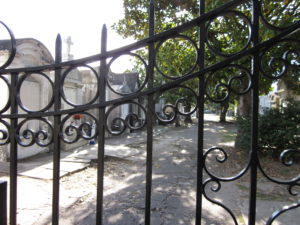 It’s Memorial Day, the unofficial beginning of summer. As a country, we take our folding lawn chairs and coolers out of storage and we gather at barbecues. Maybe we’ll mark the day by joining neighbors to line a street for a morning parade.
It’s Memorial Day, the unofficial beginning of summer. As a country, we take our folding lawn chairs and coolers out of storage and we gather at barbecues. Maybe we’ll mark the day by joining neighbors to line a street for a morning parade.
I know Memorial Day was created for us to consider sons and daughters, sisters and brothers, whose lives were lost in the service of our country. I have come to view the holiday in a broader context.
I want to take time to remember the lives of family members and strangers that have offered lessons to me or inspired me.
I don’t normally think of myself as sentimental and am not a history buff, but I can’t help but notice that my travels to all range of destinations have included a trip to a cemetery whose history is intertwined with the location.
During my trip to Buenos Aires a couple years ago, I walked between the elaborate tombs of Le Recoleta Cemetery to see the final resting spot of Eva Peron (her tomb is marked by her maiden name, Duarte).
After descending the narrow and steeply inclined streets of Monmartre, on a visit to Paris in 2012, I paid attention to the line winding around the entrance to Pere Lachaise, a cemetery whose inhabitants include Marcel Proust, Oscar Wilde and Maria Callas, although it seemed that the biggest crowds gathered to spend a few moments at Jim Morrison’s grave.
A visit to New Orleans, a favorite destination, would be incomplete without a visit to the Lafayette Cemetery along Washington Street in the Garden District. During my 2015 trip to Memphis, besides Graceland and Stax Records, one of the places I made a point of stopping by was historic Elmwood cemetery.
A slow walk among the gravestones (when I was ten, I remember my sister referring to cemeteries as marble orchards), I felt as if I was walking through time. I looked at low gravestones and read the names out loud. There were Chinese names in two public lots, probably belonging to laborers who were brought over to pick cotton or to work on bridges or railroads or other big projects. Chinese families, in Memphis, I thought. Who knew?
Besides flagged markers over the graves of Confederate soldiers and the tall monuments of wealthy, high society families, I looked for the grave of the University of Alabama’s famed football coach, Bear Bryant, and the grave of Sun Ra who, in his own way, led a revolution in music.
Here, in Chicago, I might get a history lesson by visiting Graceland cemetery, where visionary industrialist Gorge Pullman is buried, supposedly in a lead-lined coffin and a steel vault to dissuade the left leaning population from desecrating his grave. Or, I could visit Waldheim (Forest Home) just west of the city, where laborers, martyrs of the Haymarket Riot, are buried.
In the Jewish side of Waldheim, it’s not uncommon to see small black and white photographs decorate the upper corner of granite gravestones. I remember looking at the pictures and considering the dates that bookended different life spans. I’d think about the immigrants who came here from Eastern Europe; children and parents, grandparents.
Many souls came here following a dream. Many lived long lives and others only a few years. Some faced special challenges and others just did their jobs. Some changed the world (or, at least their corner of it), and others just showed up.
This Memorial Day, I’m thinking about all of them. Not just soldiers.
I don’t think it’s SACRIFICE that leads me to check out cemeteries wherever I travel, although sacrifices were made. I’m touched by the COURAGE of individuals, expressed in the choices and actions that defined their lives.
It takes courage to fight in a war. It takes courage to raise a family. It takes courage to leave home and start over in a new town or a new country. It takes courage to be an artist. It takes courage to be a complete human being, to navigate between personal interests and supporting the family and community, which may support you.
Remembering, with love and respect, the courage of those who have walked on this earth before you, is no small thing.



Leave a comment